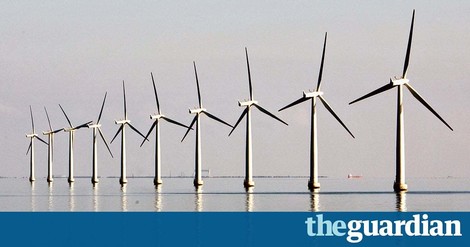Your podcast discovery platform
Curious minds select the most fascinating podcasts from around the world. Discover hand-piqd audio recommendations on your favorite topics.

piqer for: Climate and Environment Global finds Globalization and politics
I'm a freelance journalist, currently based in Madrid. I used to be a News Producer at CNBC in London before, but I thought a little bit more sun might do me good. Now I write for several news organizations, covering a range of topics, from Spanish politics and human rights for Deutsche Welle to climate change for La Marea.
A World Powered By Wind
A few days ago, I read about a hypothetical wind superfarm the size of India which, if placed on the right North Atlantic spot, and if arranged correctly, could power the world. And while that particular superplant is highly unlikely today, and would most likely rise a huge number of doubts, the idea is amazing. Could wind really supply energy to the entire planet?
Wind is definitely on an upswing. For example, the Norwegian oil company Statoil recently inaugurated the world's first floating wind farm, opening a whole new realm of possibilities for coastal countries without shallow seas. But why now?
That's where this article by Paula Cocozza for The Guardian comes in. Her style, reminiscent of a feature rather than a technical article on engineering caught me from the start. It's a great way to break through to a topic that is bound to be arid to many readers. And you get that from the opening sentence.
The story kicks off in Hull, England, in a wind blade factory. From there, it moves on to different parts of the industry, giving the reader a good insight of the power that could move the world. And it does so without going into arcane and complicated technical talk. The author has done an excellent job in distilling the most important sides of the sweet moment wind is currently living.
Such as its price. Wind is cheaper now than ever, adding another argument to the discourse of transition. The reason is much simpler than one could think: The blades are just larger. As consultant Andrew Garrad puts it:
“When I started, in 1984, I could carry the biggest wind turbine blade on my back,” he says. “I’ve made all sorts of embarrassing pronouncements about how big the blades can get … Never bigger than 50 metres or 70 metres or 90 metres, and I’m always wrong.”
Still, the wind industry is far from mature, and the article goes into detail about that too. I don't think we'll ever see an India-sized super-plant, but maybe we're not too far from a wind-powered planet.
